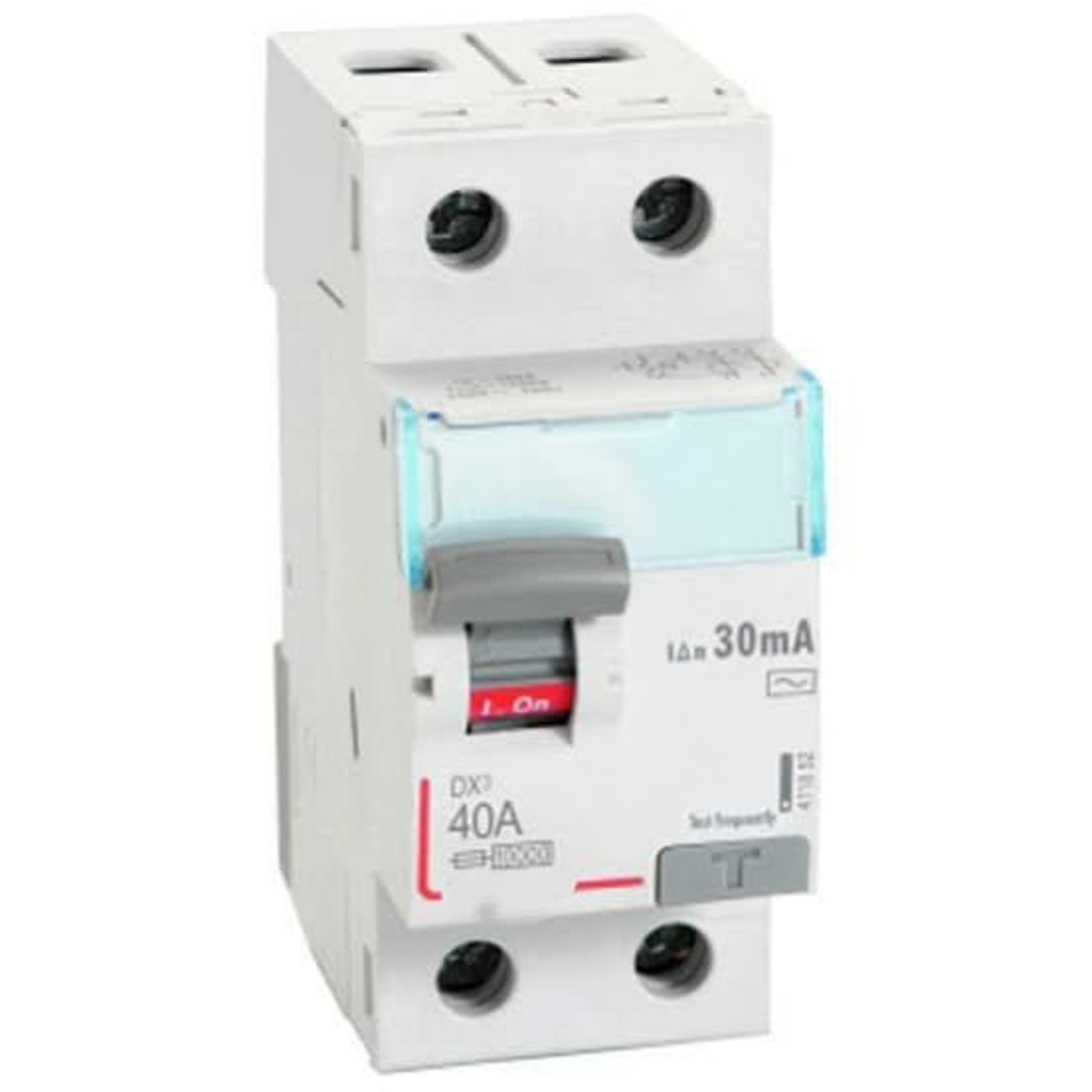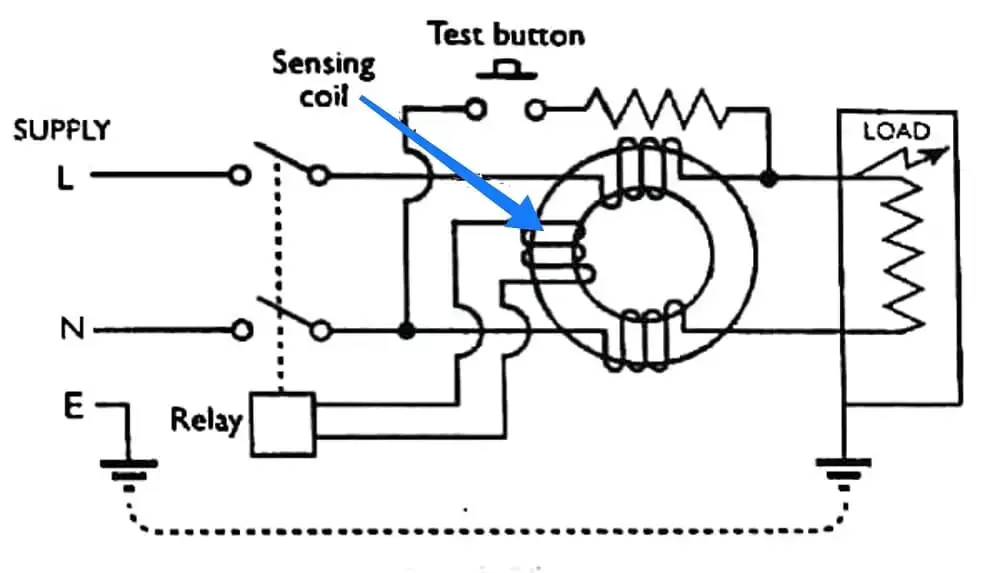Earth Leakage Circuit Breaker (ELCB)-Working Principle, Construction
Electrical safety is the main aim of any residential or commercial electrical installation. To prevent electrical shocks and identify insulation failures of electrical appliances, the ELCB full-form Earth Leakage Circuit Breaker is used. Generally available at different ratings 16A,32A, 40A, and 63A, and sensitivity like 30mA, 100mA, and 300mA. In this article, we will discuss, the working principle, Types, construction, and their advantages in electrical circuits.
This device detects stray voltages on metal enclosures of equipment and interrupts the circuit when dangerous voltages are detected.
What is an ELCB?

An Earth Leakage Circuit Breaker is a safety device used in electrical circuits. Its primary function is to prevent electric shocks by detecting small stray voltages on the metal enclosures or body electrical equipment.
When a dangerous voltage is detected, it breaks the circuit and protects the individual who is come in contact with a live circuit.
They are designed to detect current leaks and insulation failures in electrical circuits. By monitoring the flow of current, they can quickly identify any abnormalities and protect against potential hazards.
Working Principle
Types of ELCB
- Voltage Earth Leakage Circuit Breaker
- Current Earth Leakage Circuit Breaker
Voltage Earth Leakage Circuit Breaker
The working principle of a voltage Earth Leakage Circuit Breaker is simple. One terminal of the relay coil is connected to the metal body of the equipment to be protected, while the other terminal is connected directly to the earth. If there is any insulation failure or if the live phase wire comes into contact with the metal body, a voltage difference appears across the terminals of the coil.
When this voltage difference exceeds a predetermined limit, a current starts flowing through the relay coil. This current is sufficient to actuate the relay, which then trips Earth Leakage Circuit Breaker in the circuit and isolates the equipment from the supply.
It is important to note that a voltage Earth leakage circuit breaker can only detect and protect the specific equipment or installation to which it is attached. It cannot detect insulation leakage in other parts of the system.
Residual Current Circuit Breaker (RCCB)
The working principle of a current ELCB, also known as a Residual Current Circuit Breaker (RCCB), is different from that of a voltage Earth leakage circuit breaker. While voltage ELCBs are often referred to as simple ELCBs, and Current Earth leakage circuit breakers are commonly known as RCCBs or RCDs (Residual Current Devices).
In a RCD, a Current Transformer (CT) core is energized from both the phase and neutral wires. This core has two windings: one for the phase and neutral currents, and another for the relay coil.
Under normal operating conditions, where there is no current leakage, the phase and neutral currents are equal, resulting in a zero-ideal resultant magnetic field.
However, when an earth leakage happens, part of the phase current may start flowing through the leakage path to the earth instead of returning through the neutral wire.
As a result of this, the amount of the neutral current passing through the RCCB is not equal to the phase current passing through it.
When this difference in current exceeds a predetermined value, the current in the secondary winding of the CT core becomes sufficiently high to actuate the attached electromagnetic relay.
This relay then trips the circuit breaker, cutting off the power supply to the equipment under protection and safely isolating the electrical appliances.
Construction

Now let’s see the construction to understand how they function. It consists of various components that work together to ensure electrical safety. Here are the key components found:
- Relay Coil: The relay coil is an important part. It is responsible for detecting the voltage or current difference that indicates an insulation failure or earth leakage.
- CT Core: The CT core is the heart of a current RCCB. It consists of two windings: one for the phase and neutral currents and another for the relay coil. The currents passing through these windings create a magnetic field that is used to detect earth leakages.
- Electromagnetic Relay: The electromagnetic relay is connected to the secondary winding of the CT core. When the current difference exceeds a certain threshold, the relay is actuated, triggering the circuit breaker to disconnect the power supply.
- Circuit Breaker: The circuit breaker is responsible for the isolation of faulty equipment from the supply. When there is current leakage or insulation failure occurs. It breakers the supply of faulty circuits. And protect humans and equipment from shock hazards.
- Terminal Connections: Terminal connections for connecting the equipment or installation to be protected, the earth, and the power supply. These connections enable the ELCB to monitor the electrical circuit and respond to any faults.
Advantages
They offer several advantages in electrical circuits, making them essential safety devices. Here are some of the key benefits:
- Protection against Electric Shocks: The main function in the circuit is to protect the individual who comes in contact with a live part by isolating faulty equipment from the power supply.
- Detection of Insulation Failures: They continuously monitor current passing through a phase and returning from neutral. If insulation failure occurs this current will not equal in magnitude and this activates the relay which trips the breaker followed by isolating the faulty circuit.
- Enhanced Electrical System Safety: It contributes to overall electrical system safety by providing an additional layer of protection against electrical faults. They complement other safety devices, such as circuit breakers and fuses, to create a comprehensive safety network.
- Reduced Risks of Fire and Electrical Accidents: By promptly detecting and interrupting circuits with insulation failures or earth leakages, help reduce the risks of fire and electrical accidents. Their ability to quickly respond to faults minimizes the potential for damage and harm.
- Ease of Installation and Maintenance: installation is simple they can be mounted on din rail. And maintenance of them is easy we just need to press the test button to check the healthiness. Also, we can check the sensitivity by using RCCB tester for reliable operation.